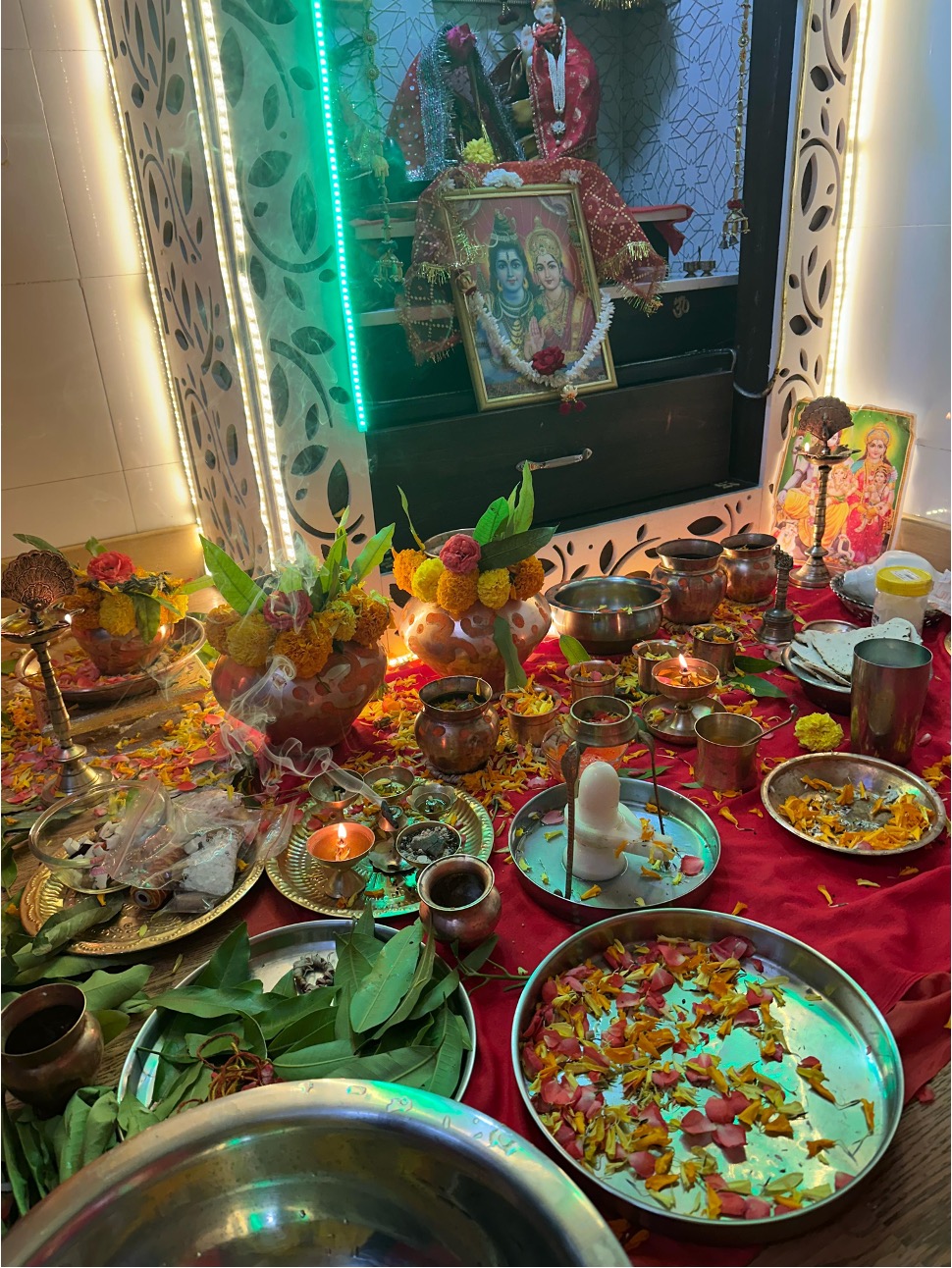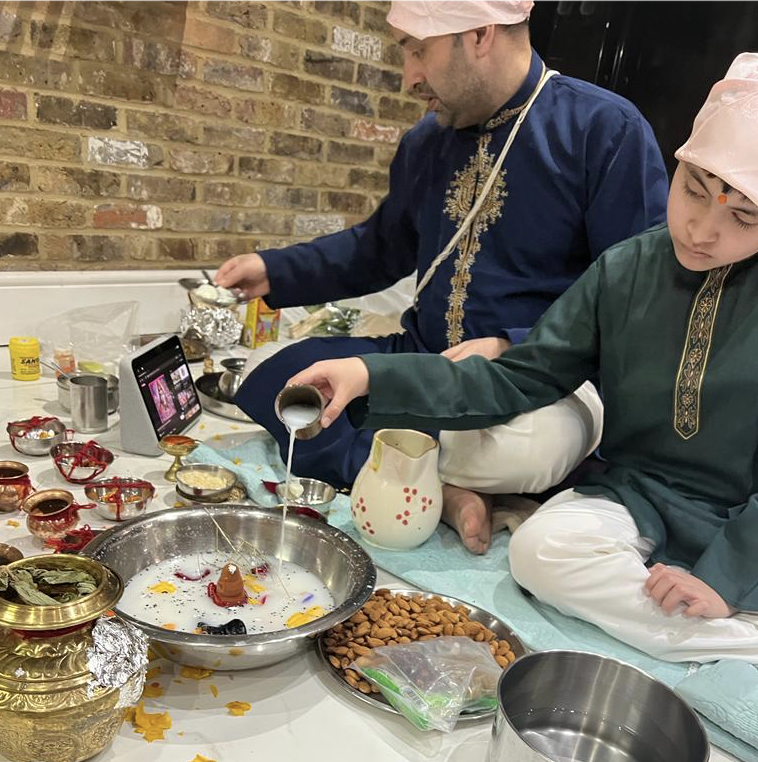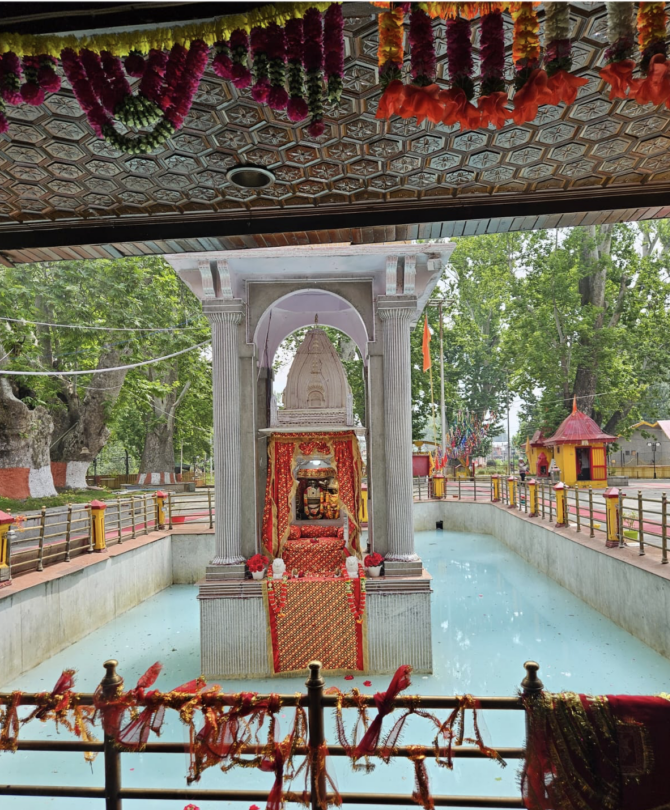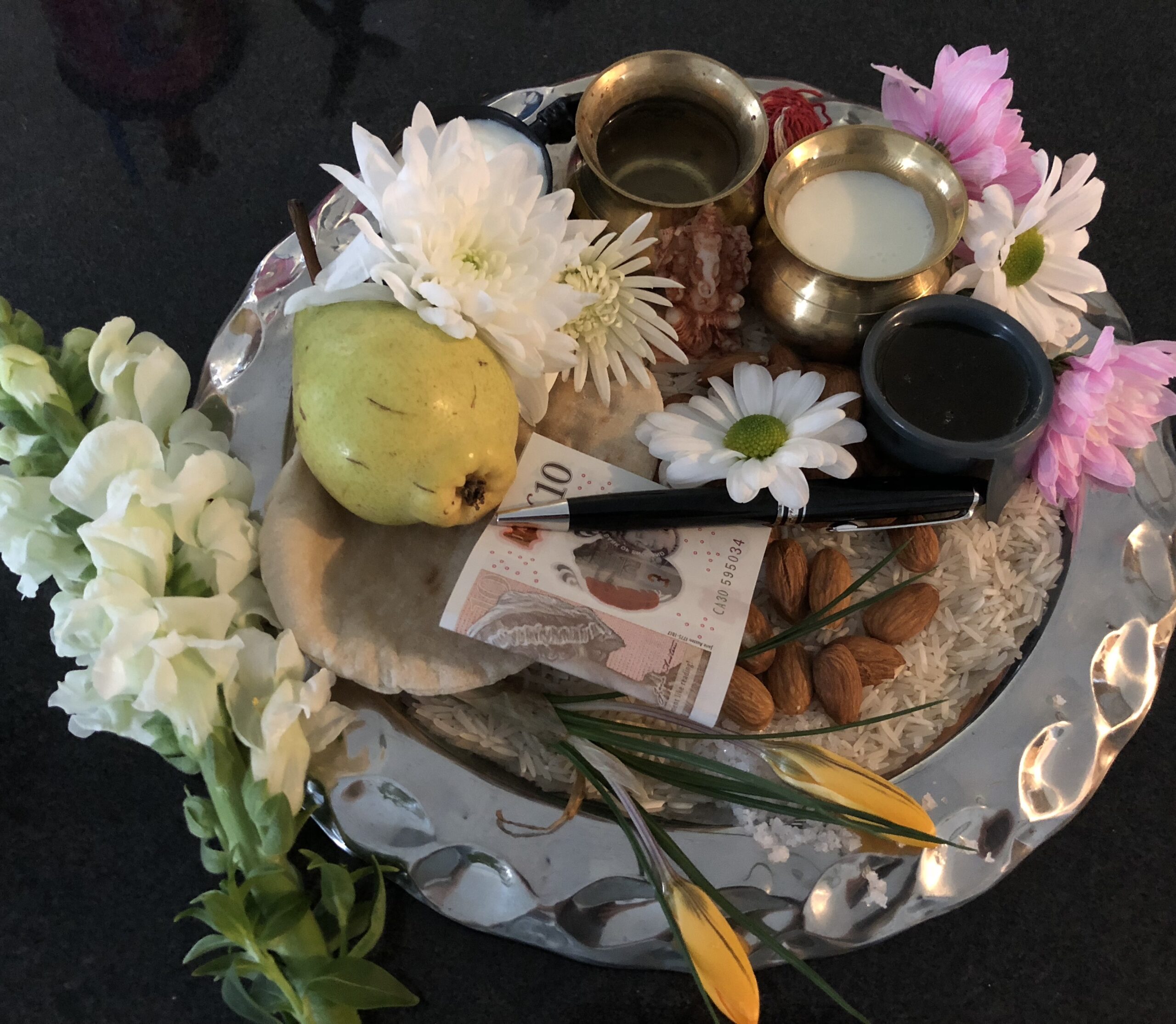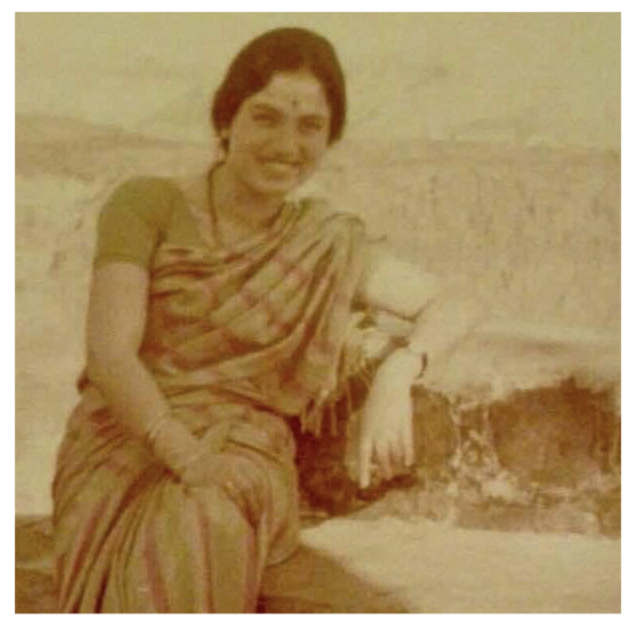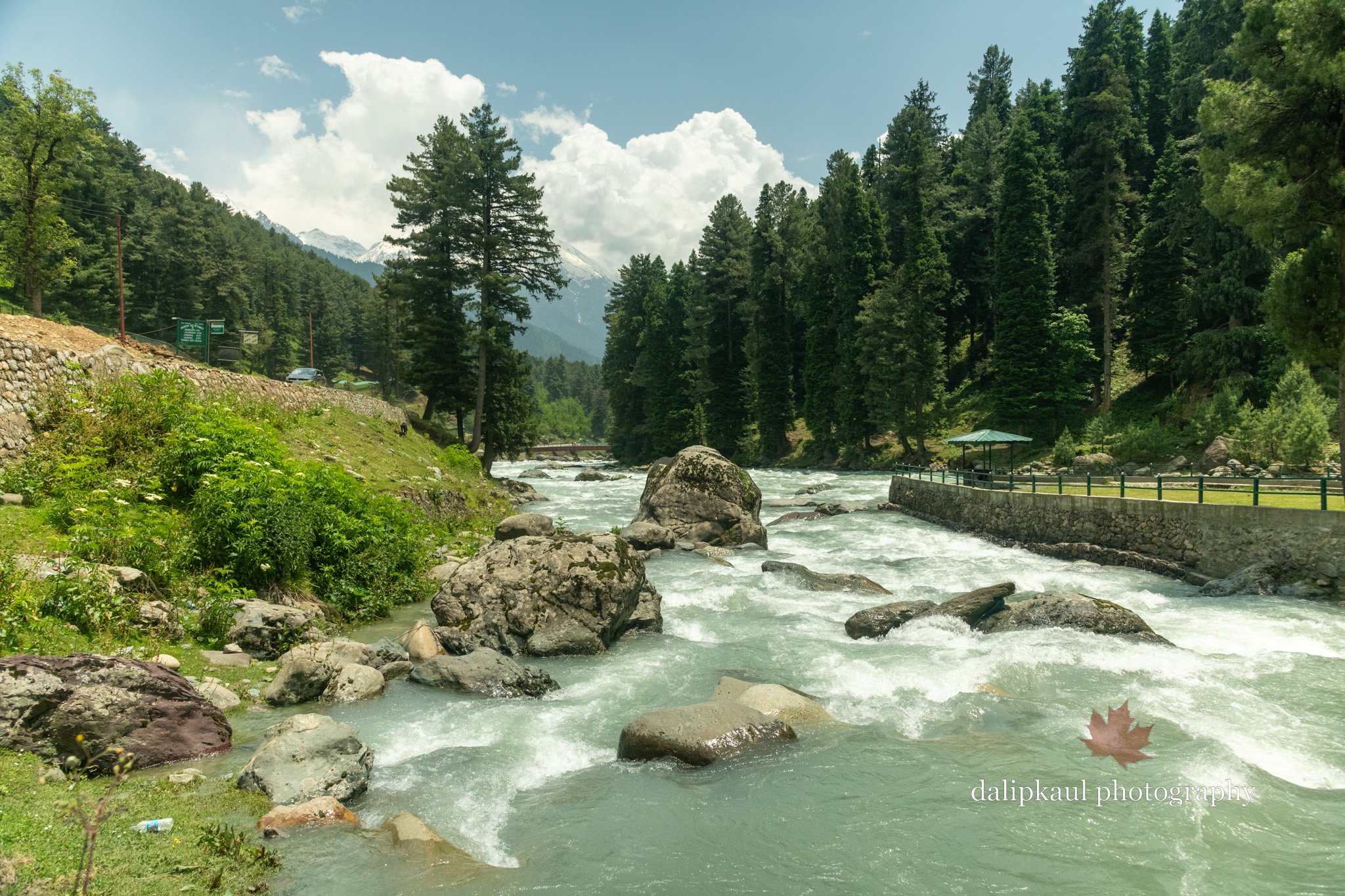
Being Kashmiri in the Modern Era
Cocoa Mudgal
Despite living in England for almost all my life, the memories which I hold closest to my heart are growing up with my grandparents in their beautiful house in Jammu; I can map every room of it so clearly in my mind’s eye, and the thought of picking lemons in the garden or eating buttery tsot on the table or running around the dusty roof is enough to bring fond tears to my eyes in seconds to this day. I don’t think I will ever find a home like it, and sometimes it feels like I might spend my whole life missing it.
I have always been in love with the idea of being a Kashmiri because I have always associated it so strongly with my grandparents, and their strength and generosity and beauty. For me, being a Kashmiri for a long time was simply a series of beautiful images in my mind that I didn’t really understand; my mother’s description of her walnut-wood panelled house she left behind years ago, hazy memories of devouring dish after dish on a hard wooden floor, distant fields of sapphire blue and saffron orange, the intricate embroidery on the curtains in my house that I have traced my fingers over a thousand times, a lilting language that feels so familiar to my ears but clunky and awkward in my mouth. My identity as a Kashmiri was nothing but a distant and fond dream to me in this way, until my first visit to Srinagar when I was eighteen, the first time I began to realise that it was more serious than I thought.
I had always been aware of the political situation, but in my naivety preferred to daydream about the art and poetry that I thought was my cultural inheritance. How could something so beautiful be bad? Being treated with disgust and disdain and feeling fear in a place that I thought would feel like home showed me there was something I had chosen not to see before, that there was a heavy dose of pain to being Kashmiri. The final nail in the coffin for me was watching the Kashmir Files, which has been heavily criticised at my university by many individuals, who viewed it as a piece of inelegant propaganda. For me personally, to see such brutal and heart wrenching violence against my own people reduced to intellectual debate from my peers whom I felt could barely even point out Kashmir on a map was infuriating and beyond confusing. When I had watched the film, every gunshot had felt like a slap in the face to what I thought Kashmir was; I was confronted again with my own blindness and stupidity to the harsh reality that I had been sheltered from. All the things I had not understood began to fall into place, and I didn’t like the complete image that they made.
For a long time, I was unsure of what to think. Being so proud to be a Kashmiri had been a central tenet of my identity, and now I was no longer certain of what that meant to me. Was it being an artist or was it being an oppressed exile? Was it beauty and harmony or inescapable conflict? I have now begun to reconcile the two in my mind in some way; just because there is so much darkness and heaviness to being a part of this it does not mean that cannot be shouldered.
I have begun to delve deeper to understand how being Kashmiri can encompass all these things and have encountered the poetry of Lal Ded, a woman who left an unmistakeable mark on the psyche of Kashmiris and struck a blow at the patriarchy and repressive society in which she lived as early as the fourteenth century. Her poetry was deceptively simple and utilised ordinary imagery that appealed to the common man, yet she had the strength to not shy away from the harsh reality of the human condition, exploring emotions and states such as anger, poverty and disillusionment with the world. Her teachings are universal, and ultimately she advocates looking deep into oneself and espouses the idea of mysticism, which means to merge with pure consciousness, which resides deep within us. Many of her phrases were preserved by word of mouth by the people of Kashmir for a long time, meaning they are heavily entrenched in the Kashmiri culture and language. Mysticism is also taught in many traditions across India, showing Lal Ded is as Indic as she is deeply Kashmiri, and showing how the history and tradition of Kashmir is intertwined with the rest of India. Whilst I think it is important to avoid falling into the reductionist trap of twisting Lal Ded’s poetry to any agenda, it has shown me something about how to deal with hurt and frustration, how to stay true to oneself in the face of adversity, how to reconcile the complexity of the human condition, and speaking out against oppression and injustice even when your truth is inconvenient to others. She says:
“Let people abuse and taunt me!
Or let them shower petals in adoration!
Nothing affects me / I am pure consciousness!
Only when I can withstand censure
Will my inhibitions break down
Let my pride be torn asunder!
Let not attacks bother me!”
My passion for being a Kashmiri is renewed, only this time with a greater acceptance and understanding of all the harshness and gravity that entails, and I have been inspired to develop the self-awareness and fortitude to look within and try and overcome violence and turmoil.

